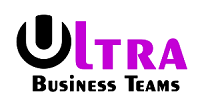People with disabilities can use services, goods, and functions made available through digital accessibility. According to the Americans with Disabilities Act (ADA), passed by the United States Congress in 1990, anyone with sensory, cognitive, or physical impairments or limitations shall have equal access to public and private settings. The principles of the Americans with Disabilities Act have been broadened to include assistive or adaptive technology in digital accessibility.
Audiobooks that convert text to speech, for example, can enable blind or partially sighted people to read closed-captioned video transcripts. As a result of the World Wide Web’s effect, the Web Content Accessibility Guidelines (WCAG) were developed in 1999. The Web Content Accessibility Guidelines (WCAG) are a set of suggestions for making web content more accessible to people with disabilities and a guide for businesses on how to satisfy the standards.
The protocols, on the other hand, guarantee that firms always adhere to them. Almost every website looks to violate at least one WCAG standard. Infractions include low-contrast writing, missing text for photo alternatives, textless buttons, and empty links.
QualityLogic design is used by many businesses to help them with their website content. As a software company that specializes in making websites accessible, they will surely aid you. They can assist you in quickly developing and implementing a better plan, from testing your software for flaws to educating you and your employees.
What Is the Importance of Access to Digital Content?
For a variety of moral and legal reasons, including those listed below, digital accessibility should be a guiding notion for technology and website design.
Violations of the ADA can result in significant fines and other consequences. Assume that a company’s website is inaccessible to people with impairments. In such circumstances, it may face fines and other monetary penalties, as well as legal fees and the necessity to modify the website.
One billion people, or 15% of the world’s population, are thought to be visually impaired. Due to a lack of technology or websites, potential clients may be turned away, or they may be denied access to essential services.
Visitors who are not blind or visually challenged can also benefit from digital accessibility. Because of its accessibility features, most people can easily navigate a website.
Developing an inclusive culture may help both customer and employee interactions. Although businesses have begun to highlight DEI initiatives and practices, much more work needs to be done.
What Are the Four Digital Accessibility Principles?
POUR is an acronym for the four online accessibility principles outlined in the Website Content Accessibility Guidelines (WCAG) that serve as the basis for accessible web content.
Perceivable
When it comes to the user interface and content information, nothing should be hidden or unavailable to the user. A disabled individual should have another method to access the content. People who are blind or partially sighted, for example, may need to use touch or audio to use the Internet, although most people do so visually.
Operable
Users should be able to navigate a website using the controls they are accustomed to using, even if the bulk of visitors do not use them. Controls, buttons, and other interface components that may be physically operated via various interaction techniques, such as voice commands, should be included.
Understanding
Websites should be simple enough for all people to understand while still being basic. A website should be organized and function similarly to related websites based on expected traffic trends. The material should be presented such that the end user understands its importance and purpose.
Robust
Content must be compatible with various technologies and platforms, such as PCs, mobile devices, and web browsers.
If these four standards are not met, the website will be inaccessible to people with impairments.
Investigating Digital Accessibility
The following are some frequent examples of digital accessibility for a well-designed website:
Description of the Image
Screen readers and other assistive technology can read text on a screen. Graphics, on the other hand, are impossible to read. Everything visual must have a full-text counterpart, such as a picture description or the words that appear there. This may be required for flowcharts, schematics, graphs, maps, menu buttons, infographics, and educational PowerPoint presentations.
Utilizing the Keyboard
To browse the web, a disabled person can use a keyboard instead of a mouse. On a fully keyboard-accessible website, tabs should be used to move logically and consistently between sections, menus, form fields, and links, as well as other content locations.
Headings Are Listed in Alphabetical Order
Sequential page titles are important not just for aesthetics but also for navigation and content organization. The information should be organized and presented in a clear and easy-to-read manner, using headers constructed from real heading components.
Properly Formatted Links
People with and without disabilities may have difficulty using hyperlinks owing to elements such as light connecting color. One of the most important factors for all consumers is a dependable connection. Users of reading aids frequently seek out easily identifiable hyperlinks. They do, however, occur in uncommon cases. For a link to be made efficiently, the following three elements must be present:
- The term “readability” refers to both the URL and the common language.
- Clarity denotes the relationship’s substance.
- By incorporating a description, uniqueness distinguishes the link from other information in the body text.
To provide a consistent user experience, all pages on a website should have the same or comparable style, layout, and navigational controls (UX). Customers are more likely to investigate a website if they believe they will get a consistent and error-free experience. It is critical to use similar iconography and control components throughout all pages, as well as to place repeat navigation links, including skip links, in the same spot.
How Can Businesses Improve Their Digital Accessibility?
What can business owners do when so many websites fail to comply with digital accessibility standards? The following suggested solutions for corporate digital accessibility support and growth may be beneficial:
Make a Strategy
Employees who will benefit from accessibility standards should be encouraged to contribute to the development of a compliance plan. Consider the implications of the ADA for web accessibility while you’re at it.
Perform an Internal Audit
Businesses should analyze their internal networks before developing externally accessible services. Platforms that workers often use for meetings, sales, and support, as well as other job-related tasks, should be included. Understanding how to establish digital accessibility successfully would be beneficial. QualityLogic may do a website audit by scanning it and advising you on what needs to be changed.
Summary
While this may seem like a challenging process, we are here to help! QualityLogic employs specialists who can assist you in managing your systems and ensuring digital accessibility. To discover more about all of their services or visit purchase their starting kit, go to www.qualitylogic.com.


